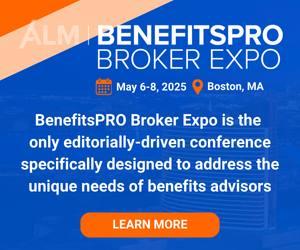 Photo: MG Photography/Adobe Stock
Photo: MG Photography/Adobe Stock
Charity should come from the heart, but sometimes is comes from the corporation. There are many reasons firms give money to worthy causes. Sometimes it's to sway public opinion. They might want the government to see them as part of the solution, not part of the problem. Companies might contribute to charities to differentiate themselves from their competitors.
Let us assume you are a benefits professional involved with a local nonprofit. It might be a major one, like the hospital or the symphony. It might be a smaller one like the local historical society. You are writing checks personally, yet would like your business to benefit when possible. You also want to stay within the legal rules. For this reason, advising your Compliance officer of your intentions beforehand is a good strategy.
- Writing as personal check. This is the easiest way to contribute, but also offers the least amount of leverage. You might be supporting a cause important to many business owners in the community, but it is from your personal funds. You will need to spread the word you are supporting this cause.
- Matching gifts programs. Many employers offer this benefit. There is usually an upper level. It might be a couple of thousand dollars annually. A 1:1 or dollar for dollar match is common. Either you or the receiving nonprofit files the paperwork. The organization must be a recognized charity, often called a 501(c)(3). Firms might have other qualifiers. The gift counts in your name, but they get this extra amount, often doubling the impact of your gift.
- Do you have a budget for community contributions? You might have an expense account or perk account allowing you access to discretionary funds. This is a way you can make contributions in the firm's name.
- Does your firm have a charitable foundation? Many big firms do. They might sponsor the symphony or a museum exhibition. Get a copy of the foundation's annual report. Look at they types of organizations where they award grants. Does your local organization seem similar? Your nonprofit has grant writers who can pick up the baton.
- Is there a telethon? Public television is famous for this type of fundraising. They solicit contributions through a major campaign. They have a room filled with volunteers on phones, fielding calls from donors. One company often supplies the volunteers each evening. They often wear company tee shirts or ball caps. Your firm and its logo are on camera. The local manager might be interviewed.
- Is this a public event? Many communities have fireworks on public holidays. This is often promoted using large banners and newspaper ads. The sponsor and their logo are frequently featured. Some communities have a "fun run" or more organized race. The sponsor's logo is often on the free shirts given to runners. In these cases, the charitable aspect blends with the advertising aspect. There might be dollars in that pocket.
Recommended For You
There are many ways to support worthy causes in the local area. Often, in addition to giving to a worthy cause, you are also gaining advertising visibility.
Bryce Sanders is president of Perceptive Business Solutions Inc. He provides HNW client acquisition training for the financial services industry. His book, "Captivating the Wealthy Investor" is available on Amazon.
© 2025 ALM Global, LLC, All Rights Reserved. Request academic re-use from www.copyright.com. All other uses, submit a request to [email protected]. For more information visit Asset & Logo Licensing.







